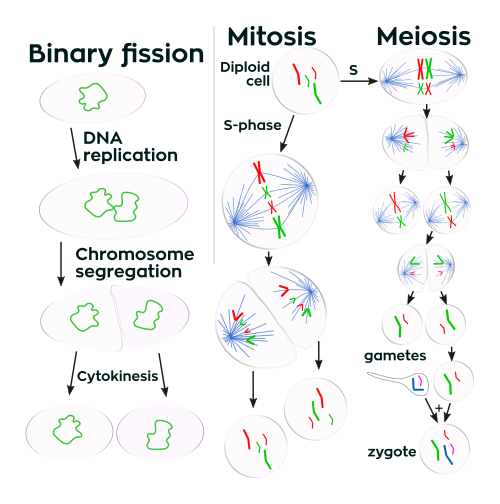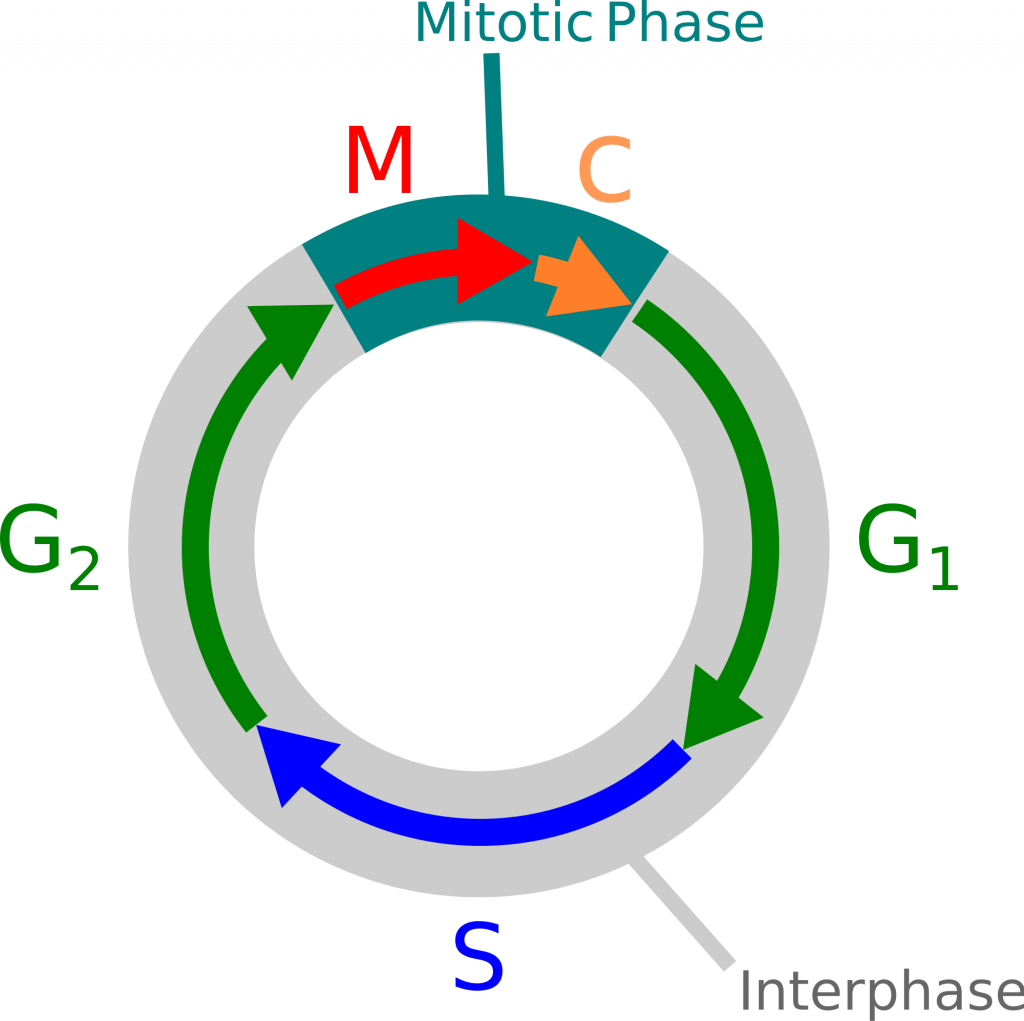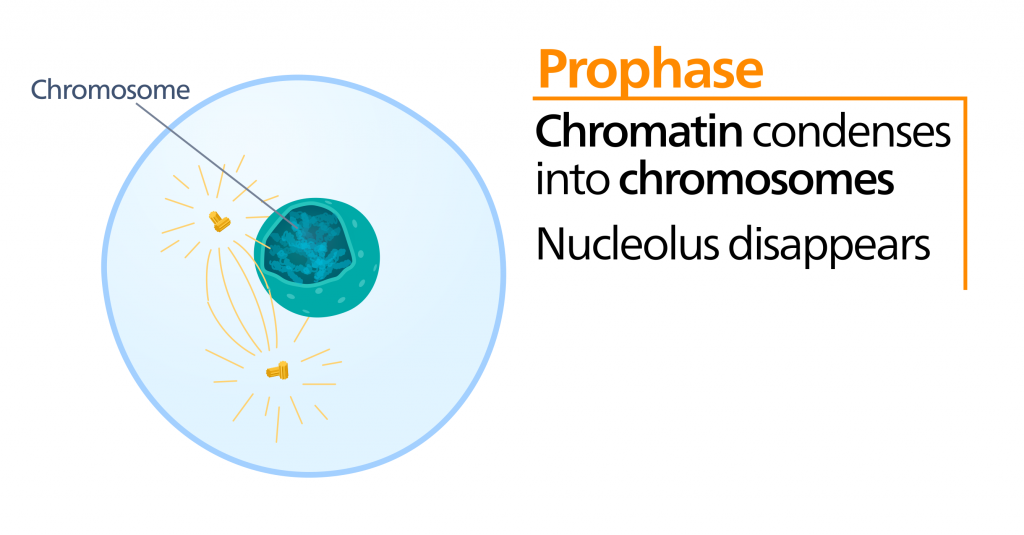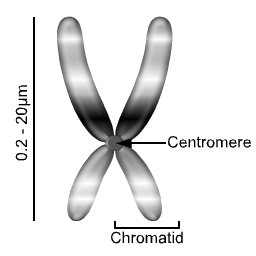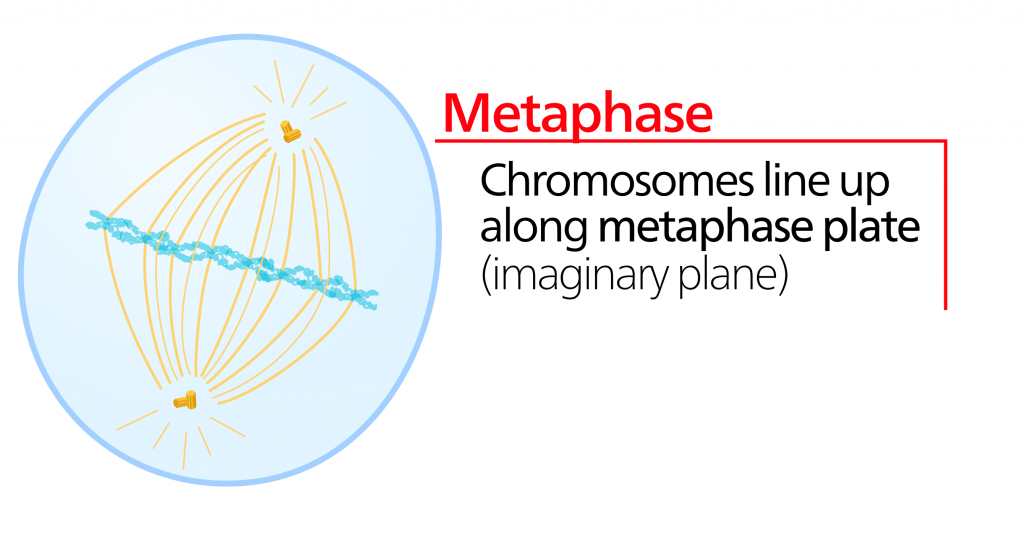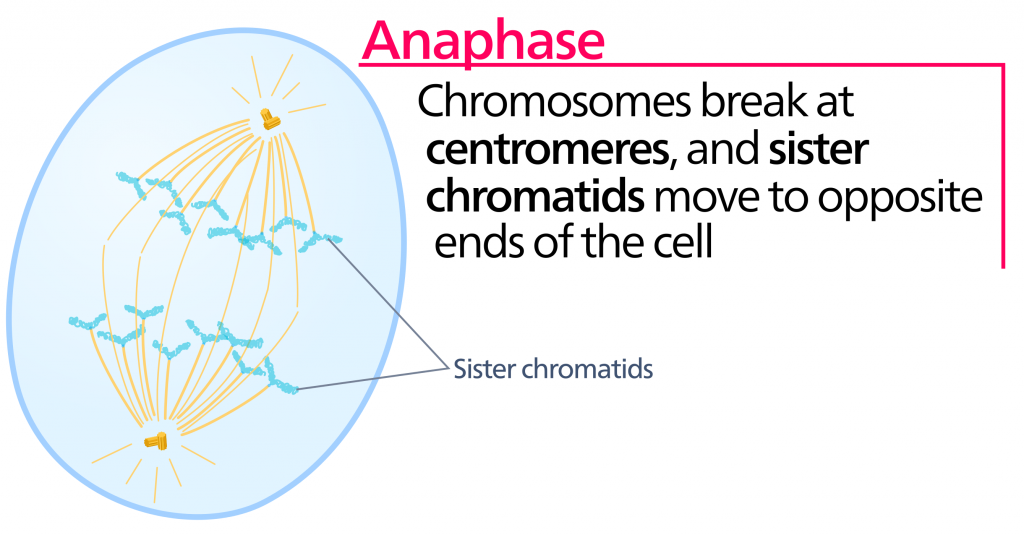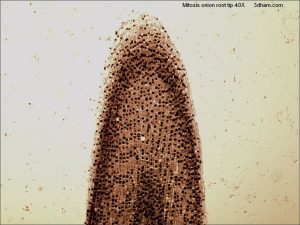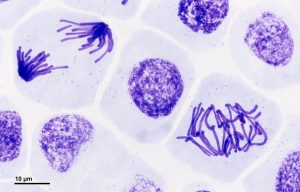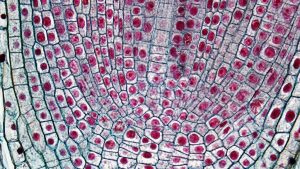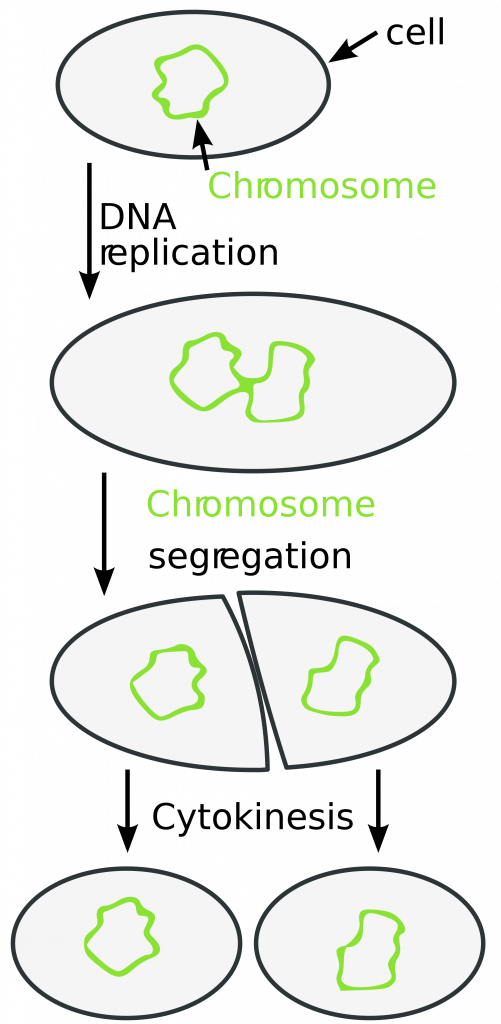Contents
Mitosis
Cell Division
Eukaryotic cells enter the cell cycle and divide by mitosis or meiosis. In comparison, prokaryotic cells replicate by binary fission, and viruses do not undergo cell division as they are non-living. Viruses replicate inside the host cells they invade by injecting their nucleic acid into the cell to replicate the virus particles.
The Cell Cycle
The cell cycle comprises three key stages: interphase (G1, S, G2), nuclear division (mitosis or meiosis), and cytokinesis.
Interphase is the longest stage in the cell cycle. During interphase, the organelles double, the cell grows, and DNA replicates.
Nuclear division can be either mitosis, creating two identical diploid cells, or meiosis, creating four genetically different haploid cells. Mitosis creates cells with identical DNA for growth and repair, whereas meiosis creates gametes.
Cytokinesis is the final stage. It is the division of the cytoplasm to create the new cells.
Prophase
Mitosis has four key stages: prophase, metaphase, anaphase, and telophase. In this stage, the chromosomes condense and become visible. In animal cells, the centrioles separate and move to opposite poles of the cell. The centrioles are responsible for creating spindle fibers which are released from both poles to create a spindle apparatus – these will attach to the centromere and chromatids on the chromosome in later stages. Plants have a spindle apparatus but lack the centrioles.
Metaphase
The chromosomes align along the equator of the cell. The spindle fibers released from the poles now attach to the centromere and chromatid.
Anaphase
The spindle fibers start to retract and pull the centromere and chromatids they are bound to towards the opposite poles. This causes the centromere to divide in two, and the individual chromatids are pulled to each opposite pole. These separated chromatids are now referred to as chromosomes. This stage requires energy in the form of ATP, which is provided by respiration in the mitochondria.
Telophase
The chromosomes are now at each pole of the cell and become longer and thinner again. The spindle fibers disintegrate, and the nucleus starts to reform. The final stage in the cell cycle is when the cytoplasm splits in two to create the two new genetically identical cells.
The stages of mitosis are visible under a light microscope in onion and garlic root tips. The tips of the roots are constantly dividing for growth, and therefore many of the cells are replicating, and the different stages of the cell cycle and mitosis are visible. A small slice of the root tip is placed on a microscope slide and broken down with a needle.
A stain is added to make the chromosomes visible, and the cover slip is pushed down. This is to squash the tip to achieve a single layer of cells so it is possible to focus on the cells. The mitotic index can be calculated by counting how many cells are visible in the field of view and the number of cells visible that are in a stage of mitosis. Then the following formula can be used: Mitotic index = (the number of cells in mitosis / the total number of cells) x 100
Cancer
Mitosis is a gene-controlled process, but mutations in the genes that control when cells divide can result in uncontrollable mitosis. This uncontrolled cell division can lead to the formation of tumors and cancer. Malignant tumors are cancerous because they grow rapidly, can spread to other tissues in the body, and often have their blood supply.
Many cancer treatments, such as chemotherapy, work by preventing rapidly dividing cells from entering mitosis. Some drugs target the spindle fiber formation in metaphase to prevent mitosis from happening. This prevents the cancer cells from dividing further, but it will also impact other fast-dividing cells such as the hair, skin, and intestinal lining and result in unpleasant side effects.
Binary Fission
Prokaryotic cells replicate by binary fission. This is when the circular DNA and plasmids replicate. The cytoplasm will then divide to create two daughter cells, each with a copy of the circular DNA and plasmids.
- List the three main stages of the cell cycle:
- Your answer should include: interphase / nuclear / division / cytokinesis
- How do prokaryotic cells divide?
- Your answer should include: Binary / Fission
- How do viruses replicate?
- Your answer should include: Inject / nucleic / acid / host / cell / replicate / inside
- When does DNA replication occur?
- Interphase
- Which is the longest stage of the cell cycle?
- Interphase

